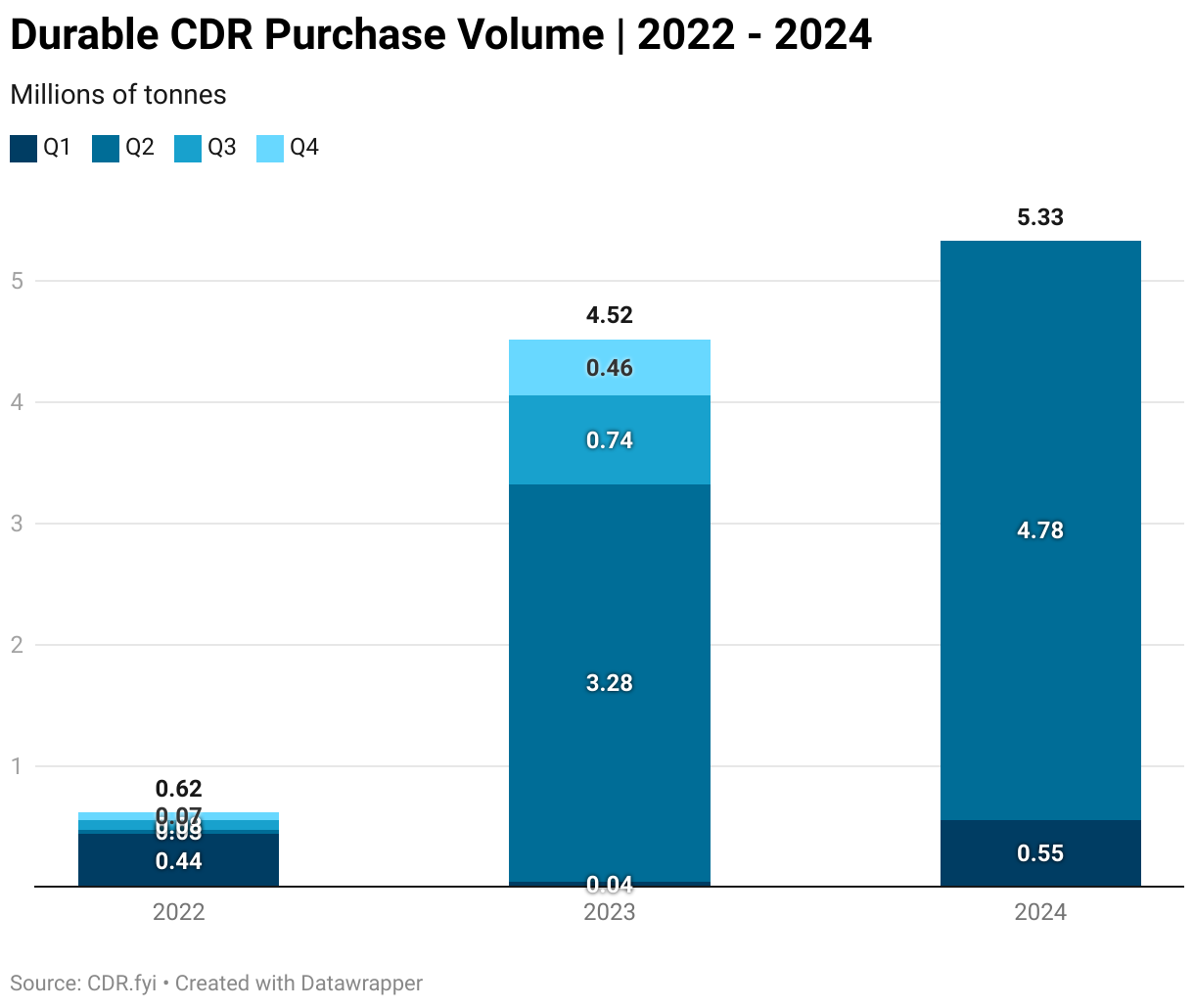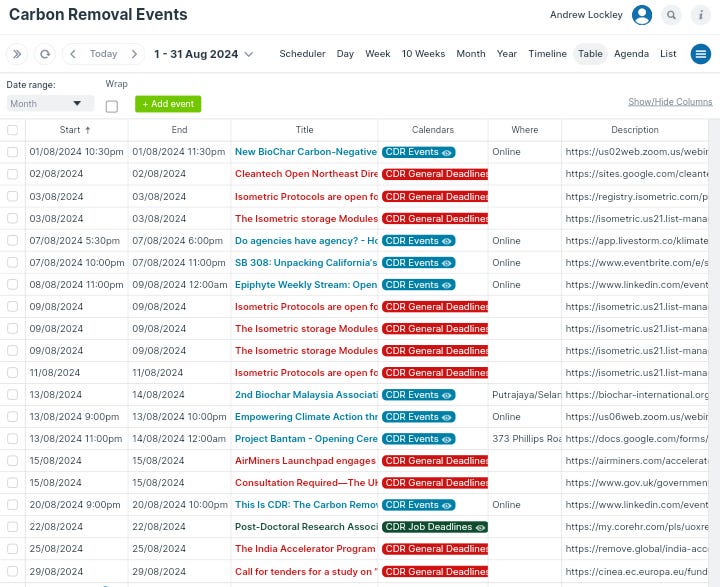CARBON REMOVAL WEEKLY SUMMARY (29 JULY - 04 AUGUST 2024)-WEEK#31
Links to recent scientific papers, web posts, upcoming events, job opportunities, podcasts, and event recordings, etc. on Carbon Dioxide Removal Technology.
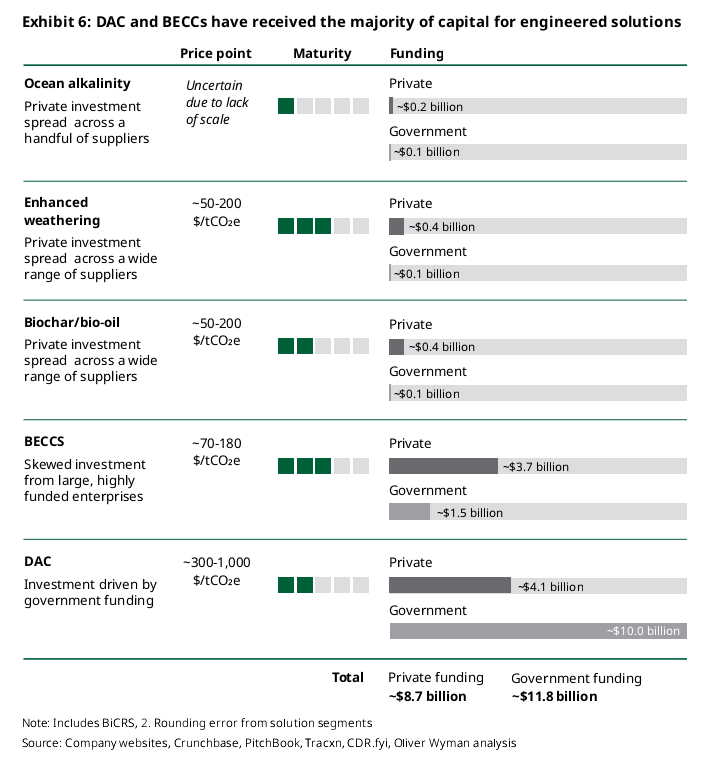
💸COMMERCIAL NEWS
Graphyte raised $30 million to scale carbon removal solution (ESG today)
Applied Carbon rakes in $21.5m Series A to sequester carbon at scale via biochar (AFN)
3Degrees facilitated over 80,000 metric ton carbon removal purchase for Microsoft from Western Rivers Conservancy’s Blue Creek forest project (3Degrees)
CarbonBlue received a $1.5M grant from the Israel Innovation Authority for their water-based carbon removal technology (LinkedIn)
Planeteers has raised a significant single-digit million euro amount in a seed funding round to expand its marine CDR technology (Silicon Canals)
ClimateVault awarded its first CDR Innovation Award to Carbon Lockdown and Octavia Carbon for their projects with a combined potential to remove up to 15,000 metric tons of CO2 (Climate Vault)
Mangrove System partnered with Carbon Capture Soctland to deploy the world’s first digital MRV system for biogenic CDR (LinkedIn)
SLB and Aker Carbon Capture joint venture awarded FEED contract by CO280 for large-scale carbon removal project (Business Wire)
Greenlyte Carbon Technologies has chosen Brusche Process Technology as their partner for the engineering, procurement and construction of their Direct Air Capture demo plant (LinkedIn)
Concordium partnered with Upwood.io. It is an upcoming Latvia-based investment platform specializing in the tokenization of real-world forests, carbon credits and CDR projects in the EU (br)
Spark Climate Solutions announced four awards supporting exploration of two new biological methane removal approaches and atmospheric chemistry research (Spark Climate Solutions)
China has entered the DAC ecosystem with the rollout of CarbonBox, a 600tCO2/yr pilot (China Daily)
Fund launched to support over 1L farmers through carbon sequestration (The Times of India)
📝RESEARCH PAPERS
Cost-effectiveness of natural forest regeneration and plantations for climate mitigation
Busch, J., Bukoski, J. J., Cook-Patton, S. C., Griscom, B., Kaczan, D., Potts, M. D., ... & Vincent, J. R. (2024). Cost-effectiveness of natural forest regeneration and plantations for climate mitigation. Nature Climate Change, 1-7.
Synopsis: Reforestation in low- and middle-income countries can remove up to 10 times more carbon dioxide from the atmosphere at a lower cost than previously estimated by using a mixed approach of planting and natural regeneration, making it a potentially crucial option for fighting climate change, according to this study.
Efficiency metrics for ocean alkalinity enhancement under responsive and prescribed atmosphere conditions
Tyka, M. D. (2024). Efficiency metrics for ocean alkalinity enhancement under responsive and prescribed atmosphere conditions. EGUsphere, 2024, 1-18.
Synopsis: OAE and direct ocean capture are promising for negative emissions, but measuring their CO2 uptake is challenging due to delayed air-sea gas exchange and other factors. Recent studies using different models and metrics show significant differences in oceanic CO2 inventory changes, influenced by atmospheric feedbacks. These feedbacks cause some ocean CO2 offgassing, analogous to DAC. Accurate metrics for OAE efficiency are crucial for calculating negative emissions credits. This paper reviews these metrics, their assumptions, and their physical meanings, showing that the efficiency metric in prescribed CO2 simulations matches gradual DAC removal in a coupled system.
Biochar as a carbon dioxide removal strategy in integrated long-run mitigation scenarios
Bergero, C., Wise, M., Lamers, P., Wang, Y., & Weber, M. (2022). Biochar as a carbon dioxide removal strategy in integrated long-run climate scenarios.
Synopsis: Limiting global warming to under 2 °C will require strong mitigation efforts and additional carbon dioxide removal strategies. This study analyzes the potential of biochar as an effective CDR option using the Global Change Analysis Model. Findings indicate that biochar can create an annual carbon sink of up to 2.8 GtCO2, potentially reducing global temperature increases by 0.5%–1.8% by 2100, depending on carbon price trajectories. Biochar’s effectiveness relies on crop yield gains, application rates, and competition with other CDR methods. It emerges as a competitive CDR strategy, especially at lower carbon prices when other methods like bioenergy with carbon capture and storage are less viable.
Biological Carbon Sequestration: From Deep History to the Present Day
Murphy, D. J. (2024). Biological Carbon Sequestration: From Deep History to the Present Day. Earth, 5(2), 195-213.
Synopsis: The global carbon cycle balances atmospheric carbon emissions from natural and human sources with carbon uptake through photosynthesis and geological processes. Over Earth's 4.54 billion-year history, atmospheric CO2 levels have fluctuated widely. In the past 10 million years, CO2 levels averaged 220 ppm, but have recently risen sharply to 424 ppm due to fossil fuel use. This rapid increase threatens climate stability, food production, and social stability. To mitigate this, enhancing biological carbon sequestration through strategies like afforestation, preventing deforestation, and transitioning to agroforestry is crucial for reducing net CO2 emissions.
Laying waste to the deep: parallel narratives of marine carbon dioxide removal and deep-seabed mining
Lidström, S., Levin, L. A., & Seabrook, S. (2024). Laying waste to the deep: parallel narratives of marine carbon dioxide removal and deep-seabed mining. npj Ocean Sustainability, 3(1), 36.
Synopsis: The deep ocean is gaining attention in climate solutions, with marine carbon dioxide removal (mCDR) seen as crucial for meeting climate targets. This narrative parallels the argument for deep-seabed mining (DSM) as necessary for widespread electrification, both framed as climate change solutions. However, while environmental impacts on marine life are central in DSM debates, the risks of mCDR remain underacknowledged. Our comparison highlights the need to emphasize potential harms in mCDR considerations to ensure informed decision-making and risk assessment.
Optimizing CO2 Purification in a Negative CO2 Emission Power Plant
Amiri, M., Mikielewicz, J., Ziółkowski, P., & Mikielewicz, D. (2024). Optimizing CO2 Purification in a Negative CO2 Emission Power Plant. Chemical Engineering & Technology.
Synopsis: This study optimizes CO2 purification in a negative emission power plant using a spray ejector condenser (SEC) and a separator. A numerical model simulates a cyclone separator's performance under various SEC conditions. Results show that a dual-inlet separator achieves 90.7% separation efficiency, outperforming the single-inlet design. Optimal conditions include a 10% liquid volume fraction (LVF) and 10 µm water droplets. Structural modifications like vanes improve efficiency by 9.2% and reduce pressure drop by 16.8%. These findings highlight the importance of design and parameter optimization in enhancing CO2 capture technology for sustainable energy.
Unlocking the Carbon Sequestration Potential of Horticultural Crops
Ilakiya, T., Parameswari, E., Swarnapriya, R., Yazhini, G., Kalaiselvi, P., Davamani, V., ... & Ajaykumar, R. (2024). Unlocking the Carbon Sequestration Potential of Horticultural Crops. C, 10(3), 65.
Synopsis: Horticultural crops, including fruits, vegetables, and ornamental plants, offer substantial carbon sequestration potential, especially perennial systems that are more productive and efficient than annual crops. The carbon sequestration capacity of plantations and horticultural crops is 16.4 Gt C, compared to 6.3 Gt C for agroforestry. Effective carbon management systems, such as higher biomass growth, waste recycling, and crop rotation, are essential. Despite the benefits, high initial investments and ongoing management challenges may impede widespread adoption. This review highlights horticulture's critical role in enhancing soil carbon levels and mitigating climate change.
Are soil carbon credits empty promises? Shortcomings of current soil carbon quantification methodologies and improvement avenues
Dupla, X., Bonvin, E., Deluz, C., Lugassy, L., Verrecchia, E., Baveye, P. C., ... & Boivin, P. (2024). Are soil carbon credits empty promises? Shortcomings of current soil carbon quantification methodologies and improvement avenues. Soil Use and Management, 40(3), e13092.
Synopsis: This study investigated how major carbon credit protocols estimate changes in SOC stocks. Researchers found significant variability in scientific rigor among protocols. Some protocols overestimate initial SOC stocks by up to 2.5 times due to reliance on regional values instead of in situ analyses. Protocols using models require different farming practices and levels of information, while those using soil sampling have varied requirements for sampling design, tools, and SOC analysis methods. We recommend reforms to standardize and improve the quantification of soil carbon stock changes, enhancing the reliability of soil carbon credits.
Carbon stock estimation in halophytic wooded savannas of Uruguay: An ecosystem approach
Baietto, A., Hirigoyen, A., Toranza, C., Schinato, F., Gonzalez, M., & Cerrillo, R. N. (2024). Carbon stock estimation in halophytic wooded savannas of Uruguay: An ecosystem approach. Forest Ecosystems, 100216.
Synopsis: This study in Esteros y Algarrobales del Río Uruguay estimated carbon stocks in soil, trees, shrubs, and herbaceous plants. Site-specific allometric equations explained 77-98% of biomass variance for dominant tree species and 86% for shrubs. The total carbon stock was 116.71 ± 11.07 Mg⋅ha−1, with 90.7% in soil, 8.3% in trees, 0.8% in herbaceous plants, and 0.2% in shrubs, underscoring their role as carbon sinks and in mitigating climate change.
Potential of carbon uptake and local aerosol production in boreal and hemi-boreal ecosystems across Finland and in Estonia
Ke, P., Lintunen, A., Kolari, P., Lohila, A., Tuovinen, S., Lampilahti, J., ... & Kulmala, M. (2024). Potential of carbon uptake and local aerosol production in boreal and hemi-boreal ecosystems across Finland and in Estonia. EGUsphere, 2024, 1-32.
Synopsis: Continental ecosystems are crucial for carbon dioxide (CO2) uptake and aerosol production, mitigating climate change. The ‘CarbonSink+ potential’ concept compares CO2 uptake and local aerosol production at an ecosystem scale. In Finland and Estonia, boreal and hemi-boreal ecosystems were analyzed for net ecosystem exchange (NEE) and negative intermediate ion concentration (Nneg). Findings show agricultural fields have higher or similar CO2 uptake rates and higher Nneg than forests. The urban garden had significant CO2 sequestration, while the coastal site was a minor CO2 source. Forests, due to their large area, are the most important for mitigating climate warming.
Mineralization of alkaline waste for CCUS
Walker, I., Bell, R., & Rippy, K. (2024). Mineralization of alkaline waste for CCUS. npj Materials Sustainability, 2(1), 28.
Synopsis: Ex-situ mineralization uses alkaline materials to react with CO2, forming solid carbonates for carbon capture, utilization, and storage. Annual alkaline waste generation could significantly reduce global CO2 emissions through this process. Despite its thermodynamic favorability, the reaction is kinetically limited. This review explores techniques to enhance mineralization efficiency for scalable CO2 sequestration, focusing on operating parameters, methods, costs, and current technology scales.
Hybrid model estimate of the ocean carbon sink from 1959 to 2022
Terhaar, J. (2024). Hybrid model estimate of the ocean carbon sink from 1959 to 2022. EGUsphere, 2024, 1-27.
Synopsis: The ocean absorbs about a quarter of human-emitted carbon and will remain the primary carbon sink as global temperatures stabilize. However, estimates of this sink's strength are uncertain due to sparse and uneven sampling and model limitations. This study presents a hybrid model combining high-frequency variability from ocean models in hindcast mode and long-term trends from Earth System Models. This approach balances the strengths and weaknesses of each model type, resulting in a more accurate estimate of the ocean carbon sink from 1959 to 2022, totaling 125±8 Pg C. This estimate is similar in magnitude but 70% less uncertain than the Global Carbon Budget's best estimate.
Could soil EC sensors or leachate EC measurements be used to monitor enhanced weathering?
Paessler, D., Smet, I., Hammes, J., Steffens, R., Stöckel, Anke A. (2024). Data Deep Dive: Could soil EC sensors or leachate EC measurements be used to monitor enhanced weathering? Insights from several hundred soil EC sensors and several thousand water analyses in three long-term weathering experiments. DOI - 10.13140/RG.2.2.11415.79521
Synopsis: This paper explores the use of soil electrical conductivity sensors and leachate EC measurements to monitor CDR through enhanced weathering. Analyzing data from three long-term weathering experiments, including 4,200 leachate analyses and over 1 million sensor measurements over two years, we found that while EC and alkalinity can qualitatively indicate CDR, they are insufficient for quantitative assessments without leachate volume data or methods to evaluate water flow. The findings suggest that more accurate sensors or additional methods are necessary for reliable CDR monitoring in EW projects. However, EC data could help reduce monitoring costs when used as a proxy for total alkalinity alongside leachate lab analysis.
Effects of grain size and seawater salinity on magnesium hydroxide dissolution and secondary calcium carbonate precipitation kinetics: implications for ocean alkalinity enhancement
Moras, C. A., Cyronak, T., Bach, L. T., Joannes-Boyau, R., & Schulz, K. G. (2024). Effects of grain size and seawater salinity on magnesium hydroxide dissolution and secondary calcium carbonate precipitation kinetics: implications for ocean alkalinity enhancement. Biogeosciences, 21(14), 3463-3475.
Synopsis: Understanding how mineral grain size and seawater salinity affect Mg(OH)2 dissolution and secondary CaCO3 precipitation is vital for OAE. Researchers tested Mg(OH)2 dissolution kinetics using three grain sizes (<63, 63–180, and >180 µm) across three salinities (∼36, ∼28, and ∼20). Smaller grain sizes dissolved more rapidly, while salinity had little effect on rates. The medium grain size (63–180 µm) was optimal for delaying secondary CaCO3 precipitation. They hypothesize that finer grains provided more nucleation sites, while larger grains maintained higher alkalinity, influencing precipitation rates. Additionally, reduced magnesium levels in lower salinities accelerated CaCO3 precipitation, similar to dissolved organic carbon's inhibitory effects. Overall, OAE efficiency is influenced by both seawater composition and the physical properties of alkaline feedstock.
Public attitudes and emotions toward novel carbon removal methods in alternative sociotechnical scenarios
Cox, E., Bellamy, R., & Waller, L. (2024). Public attitudes and emotions toward novel carbon removal methods in alternative sociotechnical scenarios. Environmental Research Letters, 19(8), 084026.
Synopsis: This study looks at how people in the UK feel about two carbon removal techniques: direct air carbon capture and storage and OAE. A survey of 1,978 people showed that opinions on OAE changed depending on the scenario presented, with a preference for a community-driven approach. In contrast, DACCS was seen positively in different settings. People were more worried about the effects of OAE on ocean ecosystems, while DACCS brought more hope. Concerns about climate change made people feel strongly about both methods, highlighting that carbon removal could divide opinions. Important factors for using these techniques included protecting biodiversity, ensuring long-lasting results, and managing costs.
Next stop carbon dioxide removal? German climate policies and the risky road to negative emission technologies
Haas, T., & Schoppek, D. E. (2024). Next stop carbon dioxide removal? German climate policies and the risky road to negative emission technologies. Zeitschrift für Politikwissenschaft, 1-21.
Synopsis: This article analyzes the political economy of German climate policy and its role in advancing carbon dioxide removal measures amid ambitious climate targets. It highlights that while ecological modernization has dominated Germany's approach to regulating society-nature relations, it is reaching its limits in achieving net zero by 2045. The authors emphasize the need to recalibrate this model to avoid mitigation deterrence and suggest considering alternative pathways, such as degrowth, for social-ecological transformation in the face of pressing climate challenges.
Bamboo charcoal application altered the mineralization process of soil organic carbon in different succession stages of karst forest land
Hu, L., Liu, X., Xie, Y., Zeng, Y., Ou, H., Yu, Y., & He, T. (2024). Bamboo charcoal application altered the mineralization process of soil organic carbon in different succession stages of karst forest land. Frontiers in Environmental Science, 12, 1411122.
Synopsis: This study investigates the effects of bamboo charcoal as a soil amendment on carbon sequestration in karst forest soils at three succession stages: virgin forest, secondary forest, and planted forest. A 60-day experiment applying different bamboo charcoal ratios (0%, 1.0%, 2.0%, and 4.0%) revealed that bamboo charcoal increased soil organic carbon (SOC) content across all forest types, with the highest SOC in planted forests at a 4.0% ratio. The mineralization potential (C0/SOC) varied, showing increased values in planted and secondary forests post-application, while the virgin forest displayed mixed results based on the charcoal ratio. This suggests that strategic bamboo charcoal application can enhance carbon sequestration, especially in virgin forests, though its benefits in planted and secondary forests are limited.
Next steps for assessing ocean iron fertilization for marine carbon dioxide removal
Buesseler, K., Bianchi, D., Chai, F., Cullen, J. T., Estapa, M., Hawco, N., ... & Yoon, J. E. Next steps for assessing ocean iron fertilization for marine carbon dioxide removal. Frontiers in Climate, 6, 1430957.
Synopsis: This article discusses ocean iron fertilization as a marine carbon dioxide removal approach, introducing the "centennial tonne" metric to quantify carbon storage durability. The authors outline five key activities for responsible OIF assessment, including field studies, enhanced modeling, improved monitoring, development of new iron sources, and evaluating public support. OIF shows promise as a low-cost, scalable solution for carbon sequestration, emphasizing the need for timely research to determine its deployment conditions.
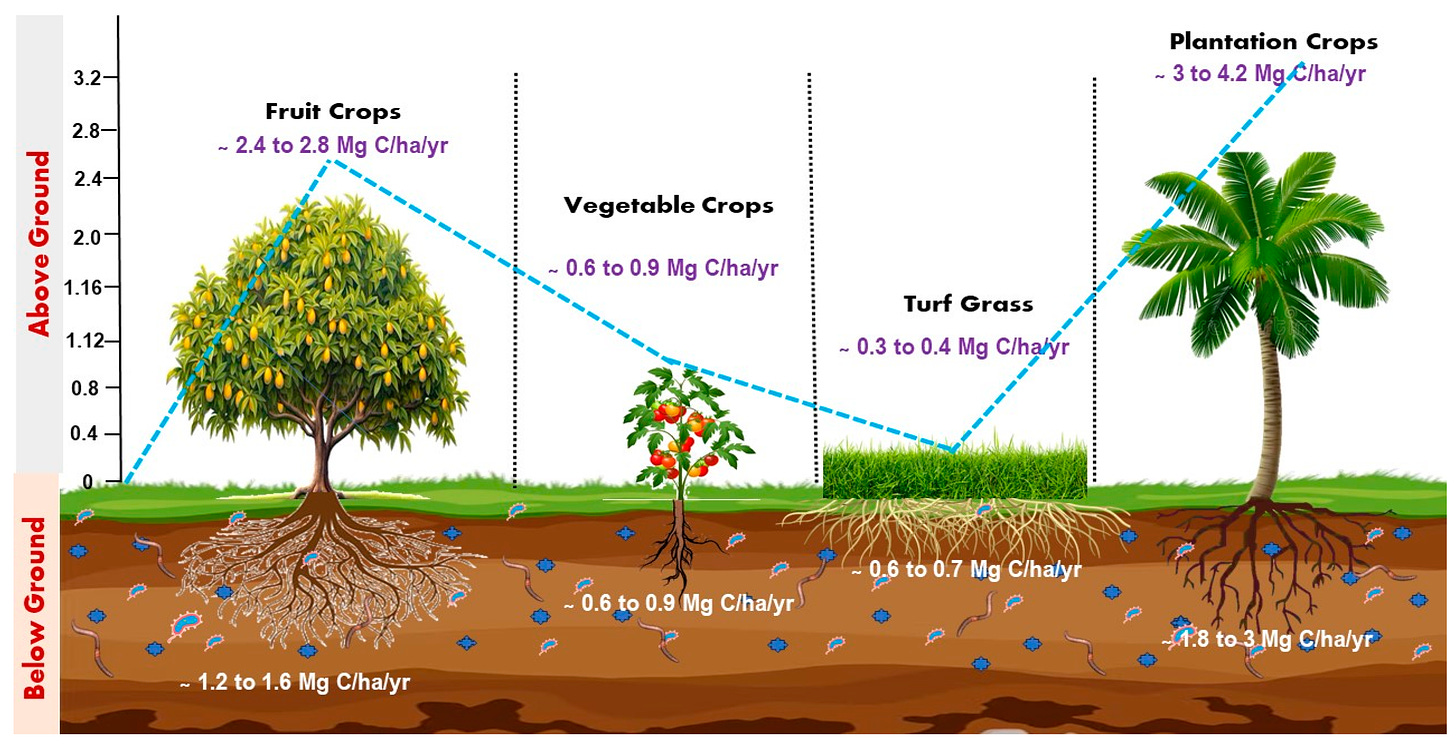
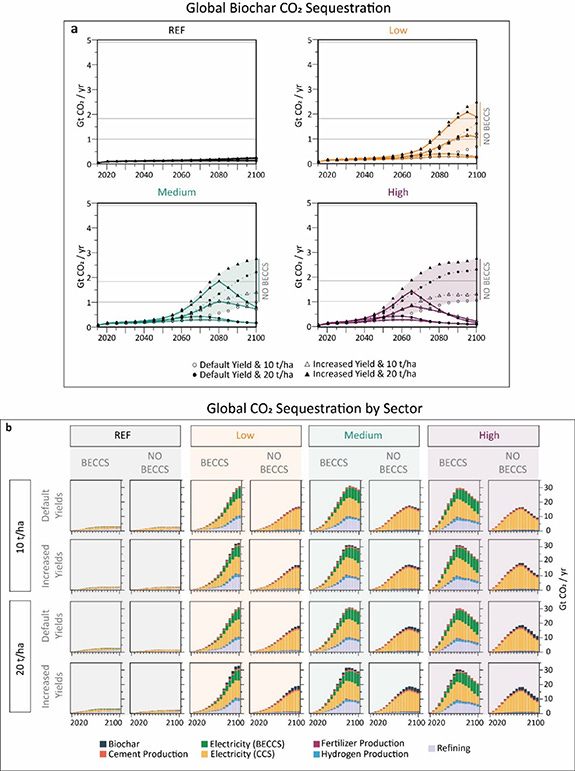
📰WEB POSTS
US Farmers Want to Adapt to Climate Change, But Crop Insurance Won’t Let Them (Bloomberg)
Regenerative agriculture: the farms of the future? (Verdict)
Pathways for carbon dioxide removal in the European Green Deal (Carbon Gap)
CO2RE Hosts the 3rd International Conference on Negative CO2 Emissions (CO2RE)
Carbon Removal and Carbon Farming Regulation (Negative Emissions)
Sprinkle rocks on farms to cut emissions and aid ozone layer (University of Reading)
Marine CDR: Mirroring lessons from biotech (Climagination Substack)
Can this startup make ocean CDR pencil out, even absent the voluntary market? (Latitude Media)
Millions of trees could grow faster with a boost from wild fungi (New Scientist)
Applied Carbon’s farm robot turns plant waste into biochar to capture CO2 (Tech Crunch)
Tao Climate Expands into USA, Joins Hemp Incubator Company Technology Accelerator (Technology Today)
UK forest carbon standard updates registry fees, nears 12 mln tonnes of validated sequestration (Carbon Pulse)
Embracing a new era at Holocene (Gasworld)
Brazilian agroforestry project loses nearly 18,000 tCO2e to drought (Carbon Pulse)
20-Foot Phoenix Made From Biochar Represents the Average Person’s Annual Carbon Footprint (Von Wong)
The end of high hopes for the traditional VCM (Marginal Carbon)
It’s the cap, stupid (London School of Economics)
The difference between carbon removal and carbon capture (Carbon180)
GSA and DOE select emerging technologies to accelerate the path to net-zero federal buildings (GSA)
How we assess the CDR effects of EW experiments (Carbon Drawdown Initiative)
Climate-Friendly Concrete Paves Path to Green Construction (Scientific American)
Irish Firm NEG8 Carbon To Capture 100 Million Tonnes of CO2 Annually by 2050 (ESG News)
How an early-stage Developer approaches funding for his biochar project (Reearthers)

📃REPORTS
Pioneering Marine CDR Policy (Rewind)
Biochar Market Biochar Market: A Catalyst for Sustainable Agriculture and Carbon Negative Solutions (Whatech)
Unlocking The Potential Of Carbon Dioxide Removal—Six priority actions the UK can take to accelerate CDR (Oliver Wyman)
2024 Q2 Durable CDR Market Update - Microsoft: Market-Maker (Cdr.fyi)
Consensus on Carbon Dioxide Removal—A Large-Sample Expert Elicitation on the Future of CDR (Institute for Policy Integration)

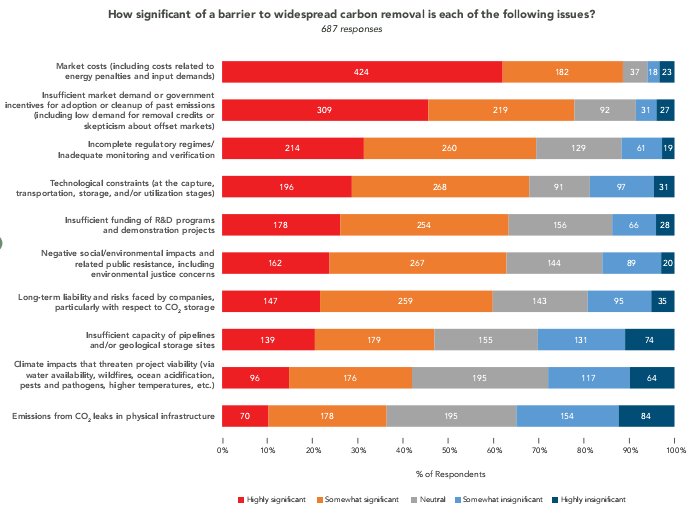
🗓️UPCOMING EVENTS
SB 308: Unpacking California's Latest Carbon Removal Bill by Institute for Responsible Carbon Removal | 07 August 2024 | Online
Do agencies have agency? - How Wieden + Kennedy crafted their ideal agency carbon removal strategy by Klimate.co | 07 August 2024 | Online
Epiphyte Weekly Stream: Open Source Direct Air Capture by The OpenAir Collective | 08 August 2024 | Online
Project Bantam - Opening Ceremony by Heimdal | 13 August 2024 | Oklahoma
(NEW) Empowering Climate Action through Biochar: Insights into the U.S. and Canada Biochar Protocol V1.0 by The Climate Action Reserve | 13 August 2024 | Online
2nd Biochar Malaysia Association International Conference 2024 by International Biochar Initiative | August 13-14, 2024
Goldschmidt 2024 conference, Chicago | 18-23 August 2024
(NEW) This Is CDR: The Carbon Removal Standards Initiative with Anu Khan by The OpenAir Collective | 20 August 2024 | Online
CO2 Removal Spring School 2024 by University of Tasmania | 2-6 September 2024 | UTAS Hedberg facility, University of Tasmania, Hobart
2024 Carbon Removal Capital Summit by XPRIZE & Santander CIB | 10-12 September 2024 | San Francisco
Carbon Unbound Europe | 11-12 September 2024
Responsible Carbon Removal Workshop: Centering Indigenous Leadership by Carbon Removal Canada | 12 September 2024 | British Columbia
Carbfix Mineralization Summit 2024 | 12-13 September 2024
Grounding Carbon Farming at Wageningen University & Research by WIMEK in collaboration with SBL, ENP, NGO myclimate, and the farm "La ferme de Hyaumet" | 14-20 September 2024 | France
Carbon Clean-up Camp | 19-22 September 2024 | UK
CDR Community Happy Hour: Climate Week NYC Edition! by Carbon Business Council & 3 others | 23 September 2024 | New York
(NEW) Great Plains Biochar Conference by The University of Nebraska–Lincoln Department of Agronomy and Horticulture, the Nebraska Forest Service and the Nebraska Biochar Initiative | 24-26 September 2024 | Nebraska
The Biochar Carbon Revolution by Grain Ecosystem | 25 September 2024 | Manhattan, New York
CO2NNECT 2024 by the Great Plains Institute's Carbon Action Alliance | 29 September - 01 October 2024 | Colorado
Bellona Climate Action Conference | 01 October 2024 | Brussels (Belgium)
(NEW) Carbon Removal Canada's Policy Report Launch: Procuring with Purpose by Carbon Removal Canada | 09 October 2024 | Ottawa, Canada
Volcanoes and past climate: adventures with deep carbon | 12 October 2024 | Online & ExCeL London
IBI Biochar Study Tour: Italy by the Italian Biochar Association and the International Biochar Initiative | 16-18 October 2024 | Florence, Italy
5th EU Carbon Removals Expert Group meeting | 21-23 October 2024 | Online
Carbon Unbound West Coast | 25-26 October | San Francisco, USA
The State of Durable Carbon Removal by Verge | 29 October 2024 | California, US
Carbon Removal Pathways We Don't Talk About Enough by Verge | 30 October 2024 | California, US
From Wetlands to the Deep Ocean: Dive Into Marine-Based Carbon Removal by Verge | 30 October 2024 | California, US
Getting to Gigatonne: Barriers (and Pathways) to Scaling Carbon Removal In The Next 25 Years by Verge | 30 October 2024 | California, US
How to apply biochar in sustainability management and accounting | German Biochar Forum | 18 November 2024
Industrial Energy Green Transition 2024 | 3-5 December 2024 | Tokyo
Scoping Workshop: Leaky deltas: sources or sinks in the global carbon cycle? by OCB | 17-20 March 2025 | Baton Rouge, LA
Bio-Char IV Conference | May 18-23, 2025 | Santa Marta, Colombia
We have curated a “Carbon Removal Events Calendar.” Explore and stay informed about upcoming events, conferences, and webinars on Carbon Dioxide Removal technology. Sync specific events / all events to your default calendar to ensure you never miss out on important CDR updates.
GUIDELINES:
Sync selected events to your default calendar in these simple steps:
1) Click on the event you want to sync.
2) Tap the menu icon (three vertical lines) at the top left.
3) Choose 'Share.'
4) Pick your default calendar.
5) Save the event.
Sync the entire Teamup Calendar to your default calendar with these simple steps:
1) Tap the menu icon (three vertical lines) at the top right.
2) Choose 'Preferences.'
3) Click 'iCalendar Feeds.'
4) Copy the URL shown for 'CDR Events / CDR General Guidelines / CDR Job Deadlines.'’
5) Paste the URL into your default calendar settings.
6) Click 'Subscribe' or 'Add Calendar.'
For more detailed instructions, visit: https://calendar.teamup.com/kb/subscribe-to-teamup-icalendar-feeds/
You can directly sync all Carbon Removal events to your default calendars by pressing the link below:
💼JOB OPPORTUNITIES
Supply Manager (EU) and Senior Business Development Manager (EU) at Carbonfuture | Remote
"Carbonfuture is the Trust Infrastructure for durable carbon removal. Today, the Trust Infrastructure consists of two products that seamlessly connect the entire carbon removal lifecycle: Carbonfuture MRV+, the most comprehensive MRV solution for durable CDR, and Carbonfuture Marketplace, the leading marketplace for durable CDR. At Carbonfuture, we build trust throughout the carbon removal journey with our rigorous, data-driven approach, ensuring unmatched quality and reliability of carbon removal. We empower suppliers by providing the essential project support and finance needed to transform their carbon removal projects into fully certified carbon credits. For corporate buyers, we offer access to portfolios of carbon removal credits adhering to the highest quality standards and provide visibility at each step of the carbon removal lifecycle via data-driven transparency enabled by Carbonfuture MRV+. We work with some of the world's most ambitious climate leaders such as Microsoft, Swiss Re, and the World Economic Forum First Movers Coalition."
Communications Manager (London) and Partnership Manager (New York City and London) at Isometric
"Isometric is a carbon removal registry. We issue the world’s most scientifically rigorous carbon credits to help Fortune 100 companies tackle climate change and prevent greenwashing."
Global CO2 Initiative is seeking a postdoc to research carbon removal opportunities via durable CO2-based products
"Carbon capture and utilization via conversion to products, such as aggregates, concrete, and plastics provides opportunities to durably remove CO2 from the atmosphere and water. Work conducted by the Global CO2 Initiative has shown that the magnitude of such opportunities can reach levels that have climatologically significant positive impacts. However, the background literature on respective research and technologies shows that firm projections for key parameters such as cost, utilization of CO2 tonnage, operational environments, and other key parameters are difficult due to a wide range of data.
We are looking to conduct a comprehensive study on documented methods, demonstrated, or projected, that can convert CO2 into long-lived products. The outcome of this work will be a validated compilation of quantitative information that will serve to project more accurately what market and carbon removal opportunities could be created, as well as a baseline data set for integrated assessment models."
Impact Manager at CEEZER | Berlin
"CEEZER is a platform for CO2 compensation and high-tech removal credits with access to >8,000 climate projects worldwide, verified by globally recognized registries. Transactions take place between corporations and project developers at the source, without any middlemen or hidden fees. CEEZER achieves this by providing scientific quality and pricing insights that help buyers and sellers interact, while allowing them to monitor credits in a balanced, high-quality portfolio."
Carbon Removal Scientist - Terrestrial Biomass-Based Carbon Storage and Carbon Removal Scientist - Enhanced Weathering at Isometric | New York, United States
"Isometric is a carbon removal registry. We issue the world’s most scientifically rigorous carbon credits to help Fortune 100 companies tackle climate change and prevent greenwashing."
Project Manager / Project Engineer at Deep Sky | Alberta, Canada
"Deep Sky is building infrastructure to scale carbon dioxide removal systems, in a tangible way."
Electrical Engineer at Phlair | München
"Non-thermal approaches for DAC rely on acids and bases. Bases efficiently bind CO2, while acids release it. Phlair have cracked the nut here by developing a breakthrough hydrolizer for acid/base regeneration, allowing us to deliver a scalable and cost-effective DAC process."
Research Fellow/Research Associate In Carbon Dioxide Removal at Heriot-Watt University | Edinburgh, Scotland, United Kingdom | Deadline to apply: 13 September 2024
"Heriot-Watt University is seeking a motivated and enthusiastic person to work with us to complement our work on geochemical carbon dioxide removal (CDR). Durable CDR using rocks and minerals is recognised as an important part of meeting climate targets, but the merits and drawbacks of many approaches remain poorly understood. By the end of this project, the post holder will have completed ground-breaking research on assessing the potential of ocean-based CDR."
Field Engineer at Thalo Labs | Brooklyn, NY
"We’re Thalo Labs, a NYC-based company on a mission to transform the built environment into a powerful tool for fighting climate change. Where others see buildings as part of the problem, we see an incredible opportunity to leverage existing infrastructure to not only accelerate drawdown, but to transform the built environment from one of the biggest carbon emitters to a carbon sink. Our technology combines proprietary sensing, software, and capture systems to accurately measure, significantly reduce, and directly capture a building’s onsite greenhouse gasses in real time."
CDR Partnerships Manager at Sylvera | London, England, United Kingdom
"Sylvera is a leading carbon data provider. Their mission is to incentivize investment in real climate action. To help organizations ensure they're making the most effective investments toward net zero, we build software that independently and accurately automates the evaluation of carbon projects that capture, remove, or avoid emissions. With Sylvera's data and tools, businesses and governments can confidently invest in, benchmark, deliver, and report real climate impact."
Lead Scientist | Carbon Removal at talisman advisory partners | Connecticut, United States
"talisman is a workforce advisory partnership specializing in clean energy and other industries of tomorrow."
Vice President of Product at Grassroots Carbon | San Antonio, Texas, United States
"Powered by nature to achieve impacts far beyond carbon removal. Grassroots Carbon built the leading grasslands soil carbon company focused on empowering ranchers to implement regenerative land management practices on U.S. grasslands."
Head of Commercialization and Finance at Thalo Labs | New York, USA
"Thalo Labs, a NYC-based company is on a mission to transform the built environment into a powerful tool for fighting climate change. Where others see buildings as part of the problem, we see an incredible opportunity to leverage existing infrastructure to not only accelerate drawdown, but to transform the built environment from one of the biggest carbon emitters to a carbon sink. Our technology combines proprietary sensing, software, and capture systems to accurately measure, significantly reduce, and directly capture a building’s onsite greenhouse gasses in real time."
Director of Finance and Business Operations at Queen's Carbon | Pine Brook, NJ
"Queens Carbon’s mission is to Decarbonize the Cement and Concrete Industry. Backed by Breakthrough Energy Fellows, a $14.5M ARPA-E grant and leading VCs, we’re developing a new production process that dramatically reduces the CO2 emissions associated with cement production. At scale, this technology will enable gigaton-level reductions in CO2 emissions via avoidance and capture routes."
Lead Engineer Sensor Technology at Everest Carbon | Linz, Austria
"Everest Carbon is a fast-growing climate technology startup specializing in innovative sensor technology for the commercialization of negative emissions."
Environmental Systems Simulation and Optimization Intern - Carbon Removal at Autodesk | Toronto, ON, CAN
"In order to hit global 1.5C climate targets and mitigate the impacts of climate change, it is now accepted that a combination of carbon removal and renewable energy strategies need to be rapidly researched and deployed at scaled.
At Autodesk Research, we're building on our past work in generative design, dynamic system modeling and optimization, multi-disciplinary optimization, and machine learning to contribute to this effort. Our goal is to develop the next generation of high-quality optimization tools, metrics and frameworks that integrate multiple disciplines seamlessly into future sustainable design tools and processes.
Specifically, data-driven, physics-based surrogate models can play a pivotal role in optimizing these systems. These models act as a bridge between complex computational models and the need for efficient decision-making in real or near-real time. Despite their potential, the field faces challenges, especially in balancing model accuracy and computational efficiency. Integrating machine learning algorithms with physics-based models requires deep understanding in both areas and is essential for creating accurate and efficient models, especially for large-scale or complex real-world physical systems."
Account Executive, Americas at BeZero Carbon | New York
"BeZero Carbon is the largest global ratings agency for the Voluntary Carbon Market. We distribute our ratings via our SaaS Product, BeZero Carbon Markets, informing all market participants on how to price and manage risk. Our ratings and research tools provide buyers, intermediaries, investors, and carbon project developers with mission-critical data."
Senior Electrochemical Engineer at Marble | Paris, France
"Marble firm is developing a unique electrochemical process which is 10x more energy efficient than first generation DAC and 3x better than the most ambitious second generation technologies. At megaton scale, we estimate the cost per ton to be well below $100/ton."
🎙️PODCASTS
Humanity’s Most Abundant Material Is a Huge Climate Problem | Shift Key with Robinson Meyer and Jesse Jenkins
"The world uses about 30 billion tons of concrete every year — more than any other material except water. It is the most ubiquitous human-made substance in the global economy. It’s also a huge climate problem. Producing cement, which is the key ingredient in concrete, generates roughly 8% of global annual greenhouse gas emissions.
Cody Finke has a plan to change that. He is the chief executive officer and cofounder of Brimstone, a startup that says it can cheaply produce ordinary Portland cement — the kind used in construction worldwide — without carbon emissions. This week, Rob chats with Finke about why cement’s carbon emissions aren’t from fossil fuels, why there are fewer cement plants than you might think, and the all-important difference between cement and concrete."
🎥YOUTUBE VIDEOS
Inside the hidden carbon plant pulling CO2 from thin air | BBC News
"In Iceland, a huge carbon plant is sucking carbon dioxide from thin air and turning it into rock.
So, how does the technology work and will it help in the fight against climate change?
This video is from BBC Click, the BBC’s flagship technology programme."
Regenerative Ecosystems As Circular Economies with Teju Adisa-Farrar | Trellis Group
"Regenerative agriculture can give us strategies to better create circular economies that are rooted in cultural, environmental and economic equity. With a particular focus on fiber and textile production, this talk illuminates how regenerative ecosystems are pathways to circular economies."
Revolutionising Cement: How New Tech Could Slash 8% of Global Emissions! | Engineering with Rosie
"In this video we will take a look at a technology that is a brand new take on some of the most important and most emissions intensive industrial processes that modern society relies on. We’re talking cement manufacturing – responsible for 8% of global emissions on its own. Processing minerals like iron ore, alumina, spodumene. Together these processes supply the materials we need for modern life – concrete, steel, aluminium, batteries, to go in buildings, wind turbines, solar panels and EVs that we need into the future. These materials are vital for the future but come with stubborn emissions that can’t be simply electrified away. We are going to head inside the R&D facility for Calix and their spinoff Leilac (Low Emissions Lime And Cement). They have reimagined the humble kiln or furnace that has been powering these critical processes for hundreds and in some cases thousands of years, to get rid of those hard to abate process emissions. And they’ve invited us here today to take a look and tell us how it works."
Enhanced Rock Weathering a community-based carbon removal solution helping businesses achieve net zero - Simon Manley | Energy Live News
Beyond Emissions: Exploring Cutting Edge Carbon Removal Solutions | 3Degrees Group, Inc.
"Join 3Degrees as we explore two groundbreaking carbon removal projects. Discover the innovative technologies at Southwest Biochar and CarbiCrete, and learn how they are making significant contributions to combatting climate change.
At Southwest Biochar, we delve into the environmental benefits of biochar, including carbon sequestration, soil health improvement, and greenhouse gas reduction. Meanwhile, at CarbiCrete, we investigate cutting-edge carbon removal technology that integrates into concrete production, turning a critical building material into a carbon sink.
Witness firsthand how these pioneering solutions are revolutionizing our approach to sustainability. Meet the experts driving these innovations, explore the processes, and gain insights into the environmental benefits these technologies deliver."
About the GGR Peat Demonstrator | CO₂RE - The Greenhouse Gas Removal Hub
"Introducing the GGR Peat Demonstrator, one of five BBSRC-funded projects in the Greenhouse Gas Removal Demonstrator (GGR-D) programme."
Is “Shared Storage” how we make DAC cheaper? | Tito - AirMiners
Weekly Carbon Removal Updates from 29 July - 04 August 2024 | Carbon Removal Updates
🚨DEADLINES
(Deadline Extended) Call for Abstracts—AGU Conference | Submissions are open until 05 August 2024
CDR Sessions at AGU2024:
GC089 - Large-Scale Carbon Dioxide Removal: Potentials, Considerations, and Challenges
GC054 - Connecting Science and Monitoring, Reporting and Verification (MRV) Development for Cross-Pathway Carbon Dioxide Removal (CDR) Technologies
B088 - Science-Based Carbon Dioxide Removal (CDR) Strategies that Incorporate Monitoring, Measurements, Reporting, and Verification (MMRV)
OS027 - Modeling Approaches in Support of Ocean-based Carbon Dioxide Removal (CDR) Research
SY037 - Navigating Uncertainty: Assessing and Communicating Risk in Marine Carbon Dioxide Removal Research, Development, and Deployment
GC040 - Carbon Dioxide Removal at scale: Science, technology, policy, and market
GC133 - Scaling Potentials of Carbon Dioxide Removal Technologies: Approaches, Constraints and Challenges
B045 - Enhanced Weathering for Soil-Based Carbon Dioxide Removal: Potential and Challenges
GC022 - Advancing Monitoring, Reporting, and Verification (MRV) of In-Situ, Ex-Situ, and Marine CO2 Mineralization-based Carbon Dioxide Removal (CDR)
GC005 - Advancements in Enhanced Weathering for CO2 Removal in (Sub-)Tropical Environments: Integrating MRV, Geochemical Modeling, and Life Cycle Analysis
GC057 - Data-driven approaches to improved climate impact accounting for nature-based carbon removal
GC146 - Terrestrial enhanced rock weathering and downstream processes in soils, rivers, and oceans
B039 - Drivers of forest carbon losses and effective interventions to preserve carbon in forests worldwide
S018 - Geologic Carbon Storage
OS036 - The Impact of Climate Change and Human Activities on Carbon Sequestration in Coastal Wetlands and Strategies for Carbon Sink Enhancement
GC048 - Climate Intervention, Mitigation, Adaptation, and Restoration: Assessing the Risks and Benefits of Using Earth System Models for Guidance on Climate Action
GC004 - Advancements in Climate Intervention Research Technologies, Policies and Practices: Opportunities and Issues
U013 - Ocean Negative Carbon Emission Approaches for Mitigating Climate Change: Mechanisms, Practices and Governance
GC151 - The Impact of Physical and Environmental Constraints on Deployment of Direct Air Capture of CO2
Isometric Protocols are open for public commenting:
Subsurface Biomass Carbon Removal and Storage; through August 9
Electrolytic Seawater Mineralization; through August 11
The following Isometric storage Modules are open for public commenting:
Subsurface Biomass Storage; through August 9
Carbonated Materials Storage and Monitoring; through August 9
CO₂ Storage via Ex Situ Mineralization in Closed Engineered Systems; through August 9










